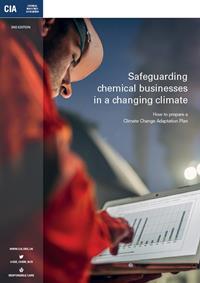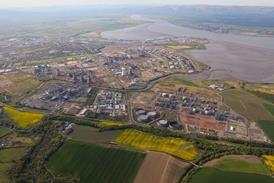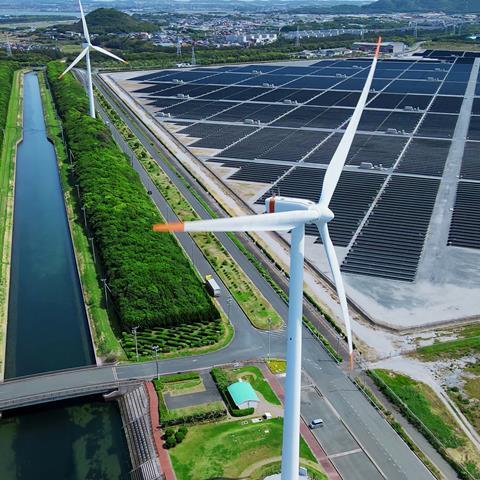How to prepare a Climate Change Adaptation Plan
SECTION 1: INTRODUCTION
The growth of the climate challenge
UK Climate Risk Assessment (CCRA3)
Risks to chemical business COMAH sites
The chemical context
Structure of this guide
SECTION 2: HOW TO DEVELOP AN ADAPTATION PLAN
Step 1: Getting started
Step 2: Identifying significant climate risks
Step 3: Managing climate risks
Step 4: Monitoring and Review
SECTION 3:SOURCES OF FURTHER INFORMATION AND ADVICE
SECTION 4:CASE STUDIES
APPENDIX
1: Case Studies
2: Examples of impacts and measures
3: Templates
As we publish this CIA guidance revision on climate change adaptation, world leaders have concluded a hard-fought agreement at the COP26 Climate Change conference in Glasgow on global national commitments to reduce carbon emissions by 2050. The COP26 consensus does not provide a final agreement that will result in limiting global warming to 1.5 degrees – the key target based on scienceled projections - but it is at least deemed to be still achievable. The agreement is the first to specifically address fossil fuels and includes a welcome commitment to accelerate action and to continue the discussion involving the range of long-term lower carbon political, economic, and new technology options. Glasgow also resulted in some pledges that will make essential contributions to ‘keeping 1.5 alive’ if they are carried through – such as phasing down coal power, ending deforestation and reversing the decline by 2030, and a 30% reduction in methane emission. However, there were some notable absentees at COP26 and it remains to be seen whether the ‘big ticket’ items of Net Zero commitments by the world’s largest carbon emitters will result in effective action, and in time.
Against the background of the Glasgow discussions – and those anticipated at COP27 in Egypt in 2022 – there is a much shorterterm goal that is essential for UK chemical businesses to manage: Adaptation to climate-related risks that are already threatening sites and will continue to do so for many years. Climate change adaptation will not only contribute to the achievement of the Net Zero targets, but at the same time protect our industry and local communities from the effects of climate change that can cause major accidents and other business disruption. A plan for climate change adaptation is needed NOW to minimize the effects on chemical businesses, with scientific evidence increasingly showing that the effects of climate change (flooding, more severe storms, drought, wildfires, supply chain disruption) are already happening, and pose immediate risks that companies need to assess and manage.
This is the focus of this guidance, developed in collaboration with our partners SLR Consulting Ltd. It has been fully revised to cover the latest UK Climate Change Risk Assessment (2021) and also the current Standards and best practice on developing adaptation plans. It aims to help chemical companies (especially those with large inventories of high hazard substances and subject to the COMAH Regulations 2015) carry out an effective risk assessment and develop an action plan tailored to each site location and vulnerability CIA strongly supports the UK independent Climate Change Committee’s call for more effective adaptation programmes, as an essential part of the management of climate change risks and achievement of the government’s Net Zero targets.
The UK Climate Risk Assessment 2021 – summarised in this guidance - highlighted that all aspects of UK life including agriculture and food production, housing, transport, the natural environment as well as essential manufacturing could be adversely affected by climate change impacts. Chemical sector businesses need to take a lead to minimise the potential effects on critical chemical manufacturing and supply chains, by making adaptation and resilience of chemical facilities a high priority. CIA’s guidance on adaptation is an important enabler in helping industry stay ahead of climate change impacts.

How to prepare a Climate Change Adaptation Plan
Against the background of the Glasgow discussions – and those anticipated at COP27 in Egypt in 2022 – there is a much shorterterm goal that is essential for UK chemical businesses to manage: Adaptation to climate-related risks that are already threatening sites and will continue to do so for many years.
DOWNLOAD















